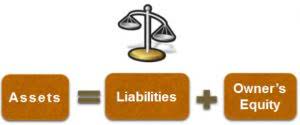
We will debit the revenue accounts and credit the Income Summary account. The credit to income summary should equal the total revenue from the income statement. Ensuring consistency with closing entries isn’t just about good technique; it’s about setting a steadfast standard that runs through the entire fabric of financial reporting. When you start temporary accounts at zero at the beginning of each period, you’re executing the financial equivalent closing entries of “clearing the stage” for a new act.

Do you already work with a financial advisor?
We can also see that the debit equals credit; hence, it adheres to the accounting principle of double-entry accounting. For example, closing an income summary involves transferring its balance to retained earnings. This crucial step ensures that financial records are accurate and up-to-date for the next period, making it easier to track the company’s performance over time. The accounts that need to start with a clean or $0 balance goinginto the next accounting period are revenue, income, and anydividends from January 2019. To determine the income (profit orloss) from the month of January, the store needs to close theincome statement information from January 2019.

Closing entries
- We want income statements to start every year from zero, but for accounts like equipment, debt, and cash accounts—reported on the balance sheet—we want to keep a running balance from the beginning of the business.
- The closing journal entries example comprises of opening and closing balances.
- We can also see that the debit equals credit; hence, it adheres to the accounting principle of double-entry accounting.
- If the period incurred a loss, the Retained Earnings account must nobly absorb the impact, ensuring that the loss is reflected in the equity of the company.
- As mentioned, one way to make closing entries is by directly closing the temporary balances to the equity or retained earnings account.
- Adjusting entries, an essential component of account reconciliation, are like your meticulous preparations before a play – you’re setting the stage, getting the lighting right, and ensuring every actor knows their cues.
They get deducted, representing the share of profits distributed to the shareholders, again affecting the overall equity of the company. Remember, dividends are paid out from net income after taxes, thus affecting the amount transferred to Retained Earnings. It’s a cyclical journey—starting with transactions, passing through the Income Summary, and ending in Retained Earnings, ready to begin anew. This process ensures that each accounting period is discrete and manages to accurately portray the company’s financial story over time.
- This is no different from what will happen to a company at theend of an accounting period.
- The retained earnings are calculated after taxes have been accounted for, which are a critical financial consideration for any business.
- Failing to make a closing entry, or avoiding the closing process altogether, can cause a misreporting of the current period’s retained earnings.
- It includes only permanent accounts, such as assets, liabilities, and equity, which carry forward into the next accounting period.
- This vital adjustment reflects the accrual accounting’s core principle of accurately recording transactions, maintaining the integrity of the closing entries process.
Creating the Post-closing Trial Balance
- This means you are preparing allsteps in the accounting cycle by hand.
- We’ll use a company called MacroAuto that creates and installs specialized exhaust systems for race cars.
- You might be asking yourself, “is the Income Summary accounteven necessary?
- Accurate closing entries ensure that there’s no question about the legitimacy of your financial statements.
- This resets the income accounts to zero and prepares them for the next year.
Although it is not an income statement account, the dividend account ledger account is also a temporary account and needs a closing journal entry to zero the balance for the next accounting period. The permanent account to which the balances of all temporary accounts are closed is the retained earnings account in the case of a company and the owner’s capital account in the case of a sole proprietorship. The income summary account is a temporary account solely for posting entries during the closing process.

Such periods are referred https://www.bookstime.com/articles/back-office-accounting to as interim periods and the accounts produced as interim financial statements. Now for this step, we need to get the balance of the Income Summary account. In step 1, we credited it for $9,850 and debited it in step 2 for $8,790.

Companies are required to close their books at the end of eachfiscal year so that they can prepare their annual financialstatements and tax returns. However, most companies prepare monthlyfinancial statements and close their books annually, so they have aclear picture of company performance during the year, and giveusers timely information to make decisions. In this chapter, we complete the final steps (steps 8 and 9) ofthe accounting cycle, the closing process. This is an optional stepin the accounting cycle that you will learn about in futurecourses. Steps 1 through 4 were covered in Analyzing and Recording Transactions and Steps 5 through 7were covered in The Adjustment Process.
- Gross Pay v Net Pay: Differences & How to Calculate? - 19/12/2024
- Amare il nostro tempo: un libro di Lucio D’Ubaldo - 08/06/2024
- Closing entries explanation, process and example - 25/03/2024

